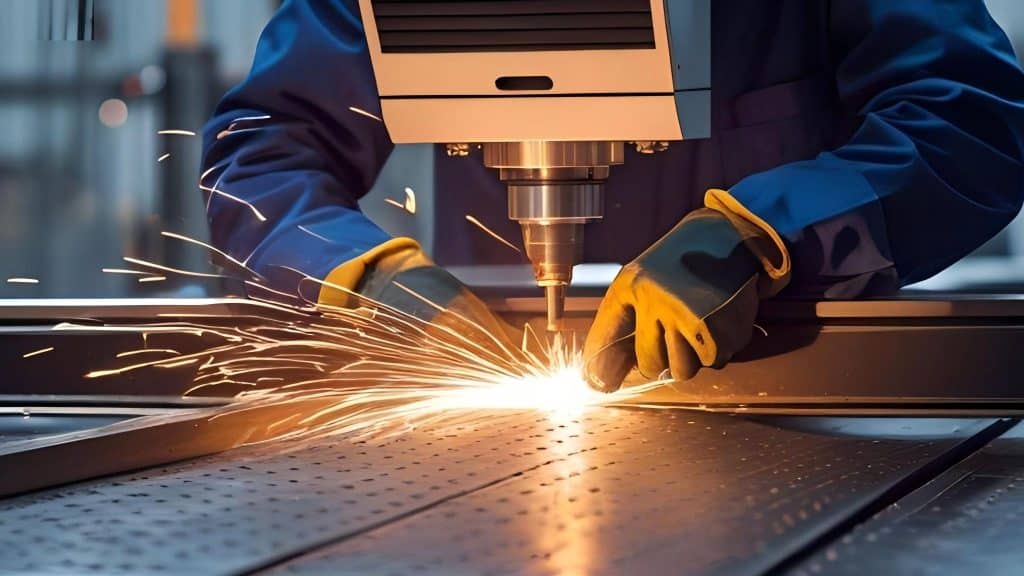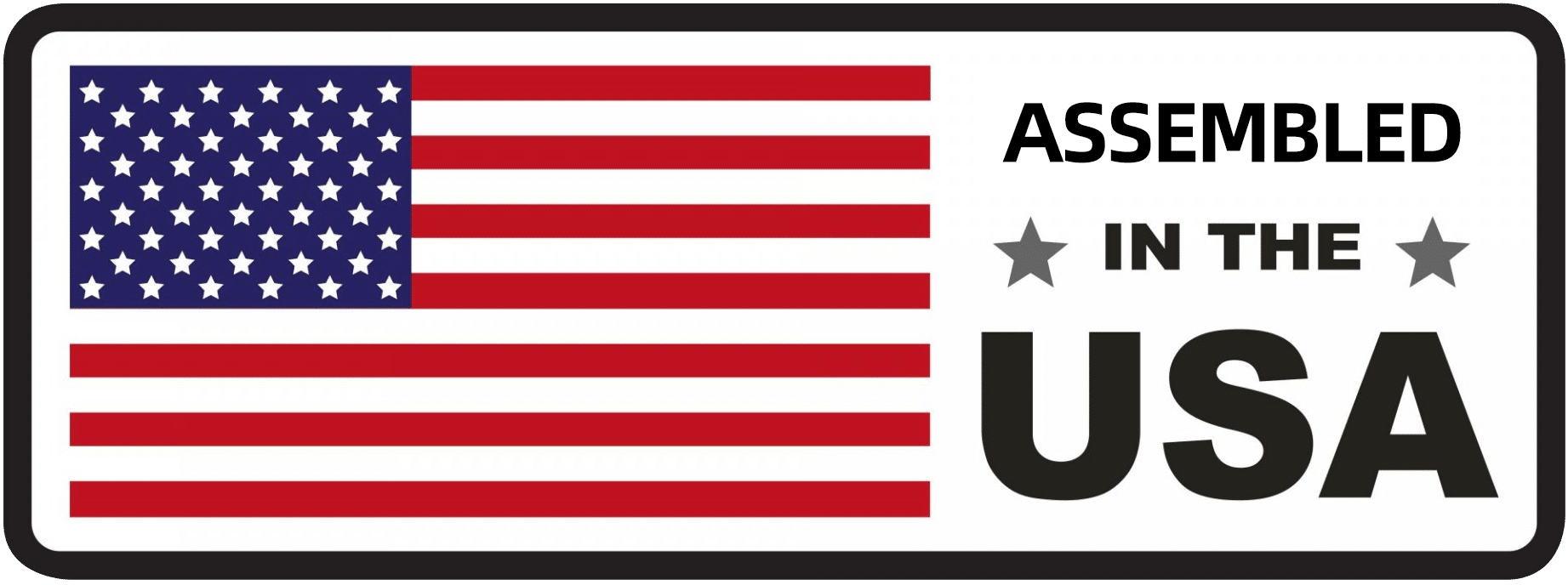Introduction

The list of laser welding’s benefits runs endlessly – high precision, ultra penetration speed, zero material distortion, to name a few. But despite its strengths, laser welding failure can still occur due to various factors like poor technique, setup misconfiguration, or inappropriate industrial application.
In this article, we discuss common laser welding problems and introduce foolproof methods to address them.
Common Laser Welding Defects
In laser welding, “defect” pertains to any flaw, imperfection, or undesirable quality in the weld that compromises its strength and durability.
Listed below are some recurring laser welding defects:
- Porosity: A highly porous weld metal is characterized by small gas cavities trapped within its surface. Porosity can weaken the weld and decrease its load-bearing capacity. A workpiece becomes porous due to contamination, excessive moisture, or the use of improper gas shielding.
- Cracks: A crack may be “hot” or “cold”. Hot cracks form during the welding process, especially when the metal is still molten. High temperature and stress often cause hot cracks. Meanwhile, cold cracks form after welding as the metal cools and contracts. These are often a result of hydrogen embrittlement in the metallic materials.
- Weak Fusion: Failure to bond the weld metal to the base material results in weak joints that have low load or stress tolerance.
- Incomplete Penetration: Some areas in the metal remain unfilled when the weld metal fails to fully penetrate the joint. This problem usually compromises joint strength and durability.
- Spatter: This refers to the small droplets of molten metal that are expelled during the welding process and do not become part of the weld. Spatter is not always detrimental, but when it comes in excessive amounts, spatter can affect the weld’s appearance and require additional cleanup.
There is no better way to prevent these common laser welding issues than investing in a reliable machine. For instance, Denaliweld’s laser welding machine series is CE/SGS/WPQR-certified, which ensures high performance in all applications with minimal to zero defects. All of Denaliweld’s products are engineered with precision, safety, and reliability in mind to make it versatile and failure-free for any commercial or industrial application.
Why Is My Laser Welder Not Welding Properly?
The problem may stem from the machine’s imperfection or human error. Here are the common culprits of laser welding malfunction.
- Incorrect power or speed settings: For instance, the operator might set the machine into a high power setting that can cause overheating of the laser source and optics. This often results in premature machine wear or damage. Furthermore, if the machine is set at a high speed, excessive heat generation occurs that can strain the cooling system and cause failure or reduced efficiency.
- Misaligned optics: If the laser welder’s optics are misaligned (due to external mechanical vibrations, improper installation, or natural wear and tear), the laser beam cannot focus properly and resulting in insufficient energy concentration on the metallic workpieces.
- Cooling system malfunction: Critical machine components can overheat and be damaged when the machine’s cooling system fails. In some cases, overheating triggers the machine’s safety mechanisms and automatically shuts it down.
To diagnose the cause of your laser welder’s malfunction, here are some suggestions:
- Inspect Power Supply: Determine if the machine is connected to a power source correctly. Make sure that all sources are active or turned on.
- Inspect Cooling System: See if the machine’s cooling system is functioning well. Inspect for the presence of leaks and ensure that coolant levels are optimal.
- Examine Optics: Check the laser welder’s lenses and mirrors for dirt or damage. Clean them if necessary and ensure they are correctly aligned.
- Review Settings:Confirm that the power and speed settings are appropriate for the material being welded. Adjust them, if needed.
- Look for Error Codes: View your machine’s control panel for any error messages or codes that can indicate specific issues. Refer to the user manual for guidance.
For those utilizing high-powered laser welding machines like Denaliweld’s CR Series, routine calibration and preventive maintenance are imperative for consistent performance. But with the advanced modular chiller system of this machine, it can be easily maintained and repaired, which ensures minimal downtime and optimal cooling.

Denaliweld’s CR series also features a data acquisition system that tracks operational metrics and cost calculations for better process monitoring and efficiency management.
What Are the Limitations of Laser Welding?
Understanding laser welding’s downsides can help you utilize it correctly. In this section, we elaborate on the limitations of this welding technology.
- High upfront cost and complex setup: Even a simple laser welder model can cost a fortune. The price of a laser welding machine starts at around $5,000 to $10,000. However, this sky-high initial cost can be easily offset by the reduction in the required cost and time during production, which drives down the firm’s operating cost in the long run.
- Variable sensitivity to joint fit-up: Laser welding technology requires precise alignment of the materials to be fused. If the joint fit-up is poor (which means that the edges of the materials do not align seamlessly), it can lead to incomplete weld penetration. The sensitivity to fit-up can result in inconsistent weld quality, which often requires post-welding cleanup.
- Limited effectiveness on highly reflective metals: Laser welding usually struggles with highly reflective metals, such as copper and aluminum. These material types can reflect a significant portion of the laser beam, which reduces absorption and translates to inefficient heating.
- Risk of heat-affected zone in thin materials: Localized and concentrated heating of laser welding creates a narrow or minimal heat-affected zone (HAZ) around the weld spot. As heating tends to be localized in laser welding, material warping and distortion follow. This risk is further pronounced when working with delicate or thin-walled components.
Preventing Laser Welding Failure: Tips & Best Practices
All forms of laser welding failure are preventable, and typical solutions to these problems are reliable and easy to perform.
Here are some suggested solutions.
Configure machine settings appropriate to the workpieces’ base material: Every material responds differently to a laser. Metals like aluminum, stainless steel, and titanium each have unique melting points, reflectivity, and thermal conductivity. It is advisable to adjust the laser welder’s settings (i.e. power, speed and focus) optimally to ensure safe and efficient laser interaction with the material.
For instance, aluminum reflects a lot of laser light, so the operator might need to adjust the settings at higher power or different wavelengths. Meanwhile, stainless steel absorbs energy more efficiently, so lower settings is the ideal option.
Maintain a clean and controlled environment: Efficient and top-quality laser welding entails a clean workspace. Dust, oil, or moisture on the material or in the air can affect the laser beam and the weld quality. So, the operator’s working environment should be free of any potential contaminants
Moreover, a controlled environment is also crucial in laser welding. When we say “controlled” environment, it means that the working space has a stable temperature and humidity. Large changes in these factors can cause the material to expand or contract, which causes joint misalignment or internal weld stresses.
Perform Regular Machine Inspections
Laser welding machines rely on complex optics, electronics, and cooling systems. Over time, these components can wear out or fall out of alignment. To address this issue, regular inspections must be performed to promptly catch issues like dirty lenses, misaligned mirrors, or coolant leaks before they cause weld failures.
Use a Defect-free Laser Welding Solution From Denaliweld
With its impressive speed, penetration, heat input, and precision, laser welding can propel your firm’s productivity up a notch. But it is also the reality that this innovative method is not infallible to defects and flaws. These issues can stem from human errors or the welding machine itself.
To minimize the occurrence of laser welding defects, acquire a laser welding machine from a reputable brand like Denaliweld. We are a leading manufacturer of cutting-edge, CE/SGS/WPQR-certified laser welding solutions. Engineered with advanced control systems and premium materials, our laser welding solutions are defect and error-free in any commercial and industrial application.



